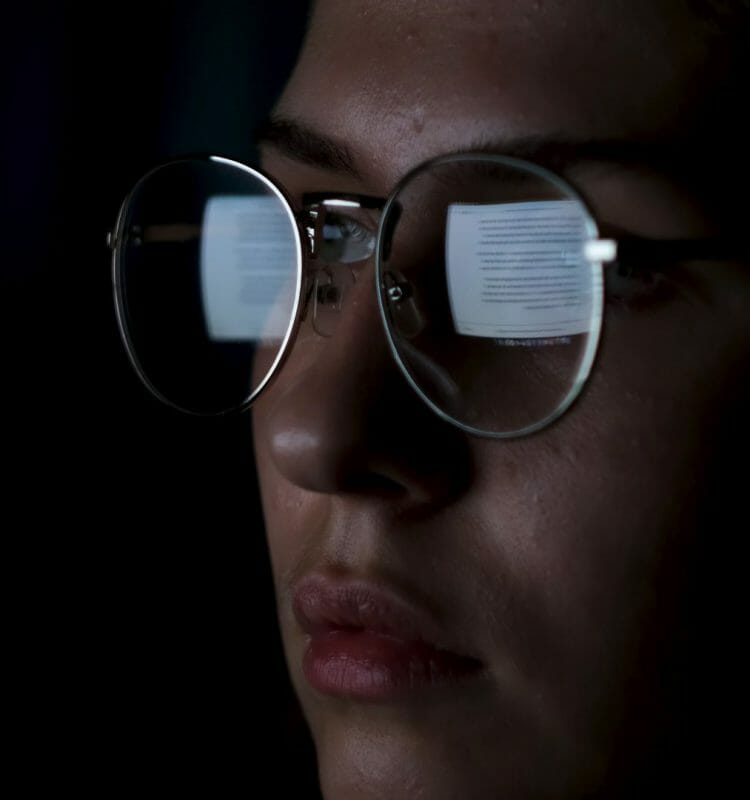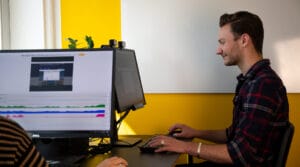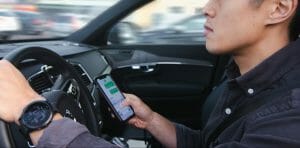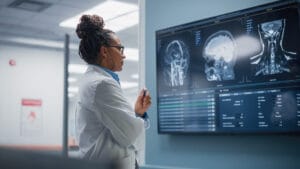EN


Eye tracking is growing up. What started as a research tool confined to labs is now being used in complex environments to study driver attention, improve medical diagnostics, and refine digital experiences.
Modern eye trackers can already function outside controlled settings, integrate with other sensors, and process data faster than ever before.
But the demands on the technology keep changing. Researchers need it to handle even more challenging environments, while keeping up with rapid advancements in AI and biometrics.
These five trends give us an idea of what’s next up for eye tracking:
When measuring human behavior, eye movements are just one piece of the puzzle. By integrating eye tracking with biometric sensors like EEG, facial expression analysis, heart rate monitors, and galvanic skin response (GSR), researchers gain a deeper understanding of how people think, feel, and act.
This trend is particularly important in automotive safety, neuroscience, and UX research, where eye tracking alone provides valuable data, but works even better when combined with other metrics.
3 Ways the Technology is Developing:




For years, eye tracking studies were limited to controlled environments, where any external distractions could be carefully managed. But researchers often need real-world insights, whether they’re tracking driver attention on the road or studying consumer behavior in retail spaces.
New applications are pushing eye tracking into dynamic, unpredictable environments, requiring systems that can handle motion, variable lighting, and greater subject variability.
3 Ways the Technology is Developing:



Historically, eye tracking technology required significant expertise to set up, calibrate, and interpret results, making it less accessible to newcomers and fast-moving industries. As the demand for eye tracking grows, researchers and businesses want systems that are easier to use.
This is especially true in fields like market research or UX testing, where eye tracking is being used on a much broader scale.
3 Ways the Technology is Developing:




Eye tracking is playing a growing role in healthcare and cognitive assessment. When used to detect driver drowsiness and intoxication or even monitor neurological conditions, tracking cognitive load and visual attention can make a real difference for public health and safety.
In the automotive industry, regulators are pushing for Driver Monitoring Systems (DMS) that can detect fatigue and distraction in real-time. In healthcare, researchers are using eye tracking to study Alzheimer’s, Parkinson’s, and concussion symptoms, identifying early indicators of cognitive decline.
3 Ways the Technology is Developing:



Eye tracking generates huge volumes of data, and manually analyzing gaze patterns and fixation points can be very time-consuming. To keep up, researchers and businesses are turning to artificial intelligence (AI) and machine learning to process eye tracking data faster and more efficiently.
This trend is especially noticeable in advertising, UX design, and cognitive science, where large datasets need to be processed in real time.
3 Ways the Technology is Adapting:




Fitting for a technology built to analyze gaze movement, eye tracking can’t afford to stand still. No longer just about following gaze movements in a lab, modern research demands require a more flexible and efficient tool for measuring human behavior.
As eye tracking keeps advancing, we can likely expect:



The value of eye tracking has always been in what it reveals about human behavior. And as its capabilities grow, so does its potential to answer more complex questions across research and industry.
With over two decades of experience, Smart Eye helps researchers get the most out of eye tracking. To learn more about how Smart Eye can support your research or product development, get in touch with our team.
